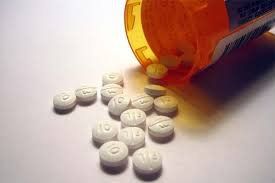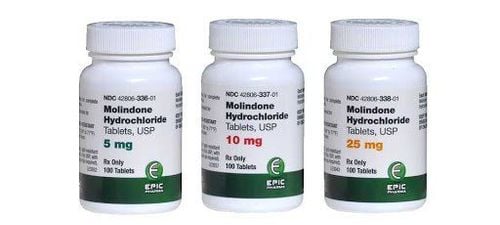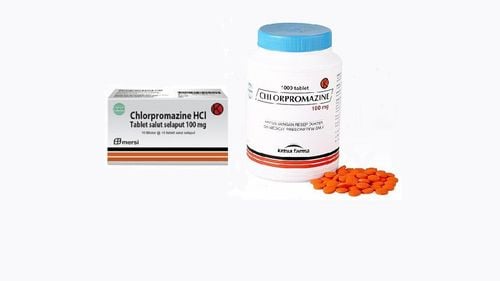This is an automatically translated article.
Olanstad 10 with the main ingredient Olanzapine is indicated in the treatment of schizophrenia and other neurological symptoms. Continue reading the article for basic information about the effects and usage of Olanstad.
1. What is Olanstad 10?
Olanstad 10 is prepared in the form of film-coated tablets with the composition of Olanzapine 10mg and excipients, packaged in 1 box of 3 blisters, 10 tablets each.
Olanstad 10 drug is used to treat schizophrenia, neurological symptoms such as paranoia, thought disorders, hallucinations, depression, ... The drug works to support patients to regain stability. determined.
2. What disease does Olanstad 10 treat?
What disease does Olanstad 10 treat with only Olanzapine as the main ingredient? Accordingly, Olanzapine is an active substance belonging to the thieno benzodiazepine group, with affinity for muscarin, serotonin, histamine H1 and adrenergic receptors and dopamine receptors, with the use of treating and maintaining psychosis.
Olanstad is indicated in the following cases:
Treatment of schizophrenia. Psychotic symptoms are positive (with obvious manifestations such as delusions, hallucinations, depression) or negative (language limitations, apathy, apathy). Maintenance treatment improves the condition in patients with a first-line response. Treatment of mania that has responded to olanzapine, prevention of recurrence of bipolar disorder.
3. How to use Olanstad 10
Dosage of Olanstad drug depends on the disease, condition and severity of the disease and must be directed by a specialist before use.
For adults:
Psychiatry: The recommended starting dose is 10 mg/day, with dose adjustments made at intervals of no less than 1 week depending on clinical judgment. Manic episodes: Initial dose is 15 mg/day for monotherapy and 10 mg/day for combination therapy, titrated to 5 mg for no less than 24 hours, if there is a response to olanzapine starting dose of 10 mg/day to recurrence prevention. Bipolar disorder: The starting dose is 10 mg/day. For patients with hepatic or renal impairment, the recommended starting dose is 5 mg/day, cautiously increasing the dose, monitoring the patient's response. For children:
Children under 13 years of age: No safety or efficacy rating yet. Children aged 13-17 years: Caution should be exercised and under the supervision of a doctor when using Olanstad 10. Schizophrenia, bipolar disorder: The starting dose is usually 2.5 - 5 mg/day.
4. Notes when using Olanstad 10
During treatment with Olanstad, patients should note the following:
Olanstad 10 is contraindicated in patients with hypersensitivity to Olanzapine, the excipients of the drug and patients with the possibility of angle glaucoma. narrow. Pregnant and lactating women should not use this medicine because Olanzapine can be excreted in breast milk. For those who drive or operate machinery, care should be taken when using Olanstad 10 because Olanstad 10 can cause drowsiness or dizziness. For patients with liver disease such as elevated ALT, AST symptoms of liver failure or being treated with drugs that can cause hepatotoxicity, hepatitis has been diagnosed, treatment with Olanzapine should be discontinued. For patients with a history of epilepsy, it is necessary to consult a doctor and be careful when using it. Caution should be exercised when Olanstad is used in combination with alcohol and other drugs that affect the central nervous system. There may be an increased risk of tardive dyskinesia with long-term treatment with Olanstad 10, so when signs of tardive dyskinesia appear, consult your doctor to reduce the dose or discontinue use. The drug should not be used in patients with galactose intolerance, lactase deficiency or glucose-galactose malabsorption. Olanstad should not be used in patients who are hypersensitive to soy lecithin. Possible side effects when using Olanstad:
Very common: Drowsiness, weight gain, increased blood prolactin levels, orthostatic hypotension. Common: Leukocytosis ; increased levels of cholesterol, urinary glucose, triglycerides; increased appetite; Parkinson's, dyskinesia, dizziness, lightheadedness; constipation; increased AST, ALT; causes rash, joint pain, fatigue. Uncommon: Bradycardia, lymphopenia, hepatitis, hair loss, urinary incontinence, increased bilirubin. Rarely: Thrombocytopenia, hypothermia, pancreatitis, neuroleptic malignant syndrome. For patients with Parkinson's disease, mental disorders are not recommended to use Olanstad drug. With anticholinergic effects: should be used with caution in patients with prostatic hypertrophy. Olanstad 10 has an effect on the nervous system, so patients need to visit the hospital for a doctor to prescribe, guide and monitor to ensure safety for health.
Please dial HOTLINE for more information or register for an appointment HERE. Download MyVinmec app to make appointments faster and to manage your bookings easily.













